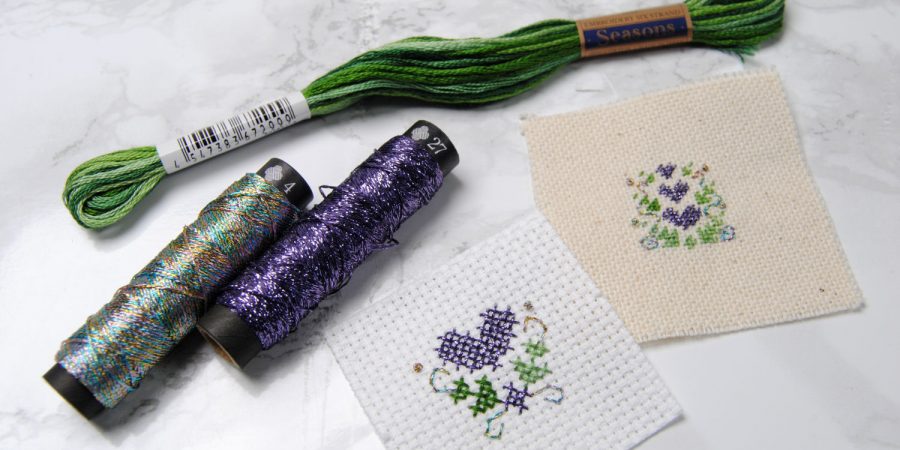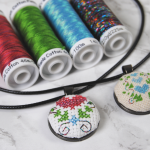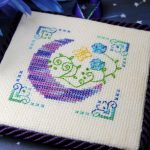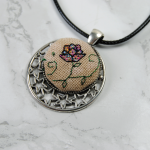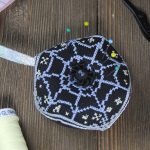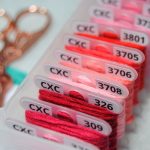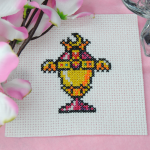Today I’d like to take a moment and try out a new (to me) thread brand, Lecien. I’ll be trying out both their Cosmo cottons and their Nishikiito metallics .
They’re a Japanese company that has been selling embroidery thread since 1950. Lecien has 462 solid cotton colors, and 140 variegated cotton colors, and currently 48 metallic colors.
This post may contain affiliate links. If you buy something using one of these links, I earn a small commission. However, there is no extra cost to you. Thanks for understanding! Learn more in my Disclosures & Privacy Policy.
Table of Contents
Why you should try new brands
Okay technically I’ve been using Lecien Cosmo Seasons for over a year now, but just on one project. And I haven’t yet tried their metallics. Since I design a lot of patterns for sale and free use by others online, I use DMC numbers and thus need to test them using DMC. So I don’t get much chance to try out other brands.
Certain thread brands seem to dominate the cross stitch and embroidery market depending on region, and we all tend to use the same brands due to most patterns being sold using that brand’s color coding, making it easier to recreate an artist’s vision.
Should we just continue blindly using the same brands over and over? Are they truly the best that’s out there? Or should we try out some of the other brands out there and not settle for what is simply easier to find in-store? Clearly I’m a fan of the latter option, and picked up some Cosmo thread of my own to try and see for myself.
Disclaimer
I’m not sponsored by Lecien and have not been given any free product to try. This is just me attempting to sate my curiosity. I would definitely love to work with Lecien and design some patterns with some of their gorgeous colors in mind, though. Just saying. 😉
Where to buy Lecien threads
You’re probably not going to find these in your local craft store unless you have a nearby LNS (Local Needlework Shop). If you’re in the US I recommend trying NeedleTravel to see if there’s any near you. I lucked out and there was one 5 minutes away. (I’ve since moved across town, but y’know. Still only an hour’s drive.).
In my experience, most LNS don’t have an especially…robust online presence, so you may need to call and ask if they carry it. Alternatively, you can just shop online!
A quick search online will find you a few options, from Etsy stores to FatQuarterShop. Most don’t seem to carry the full collection, though. The most inclusive one I’ve found is Crabapple Hill Studio, who carries Cosmo, Cosmo Seasons, and some of their metallics. They also happen to have some pretty handy conversion charts. No, I’m not sponsored by them either. 😉
I have also purchased from SnugglyMonkey , and they seem to have a decent variety of colors as well!
I haven’t found a good supplier for Europe. Please let me know if you know of any good online stores (US or otherwise) that carry this brand!
I did find a potential Australian option, though. If you purchase from Gum Valley Patchwork, or Little Quilt Store let me know how it goes!
Types of Thread
Lecien Cosmo
As I mentioned before, Lecien makes quite a variety of thread. The plain ol’ solid colors are referred to as Cosmo embroidery floss or Cosmo cotton.
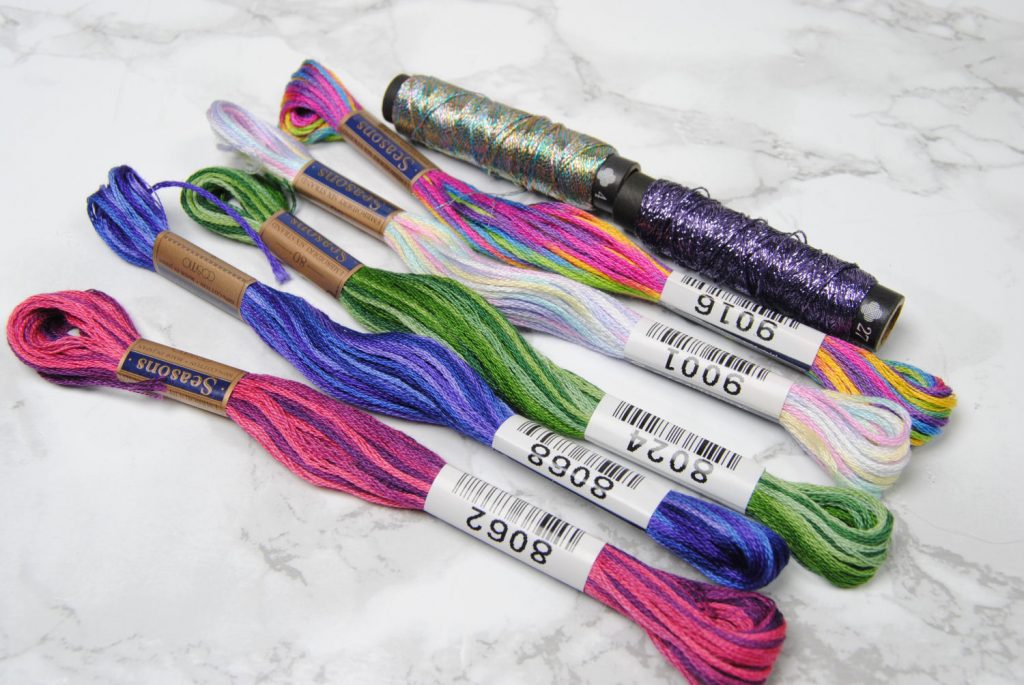
Lecien’s variegated threads are called Cosmo Seasons and are divided into groups depending on how often the thread changes color. They have a lovely illustration of this on their website. But basically it boils down to the following:
- The 5000 colors have the color changing exactly every 3.14″ or 8cm.
- The 8000 series are a much more subtle gradient rather than the sudden color changes of the others..
- The 9000 series changes are a bit more ‘random’, having both long and short bits of each color.
You can see some examples of the 8000 vs 9000 series in the photo above. I’m absolutely in love with that pastel rainbow 9001 but haven’t figured out what to make with it yet!
Lecien Nishikiito
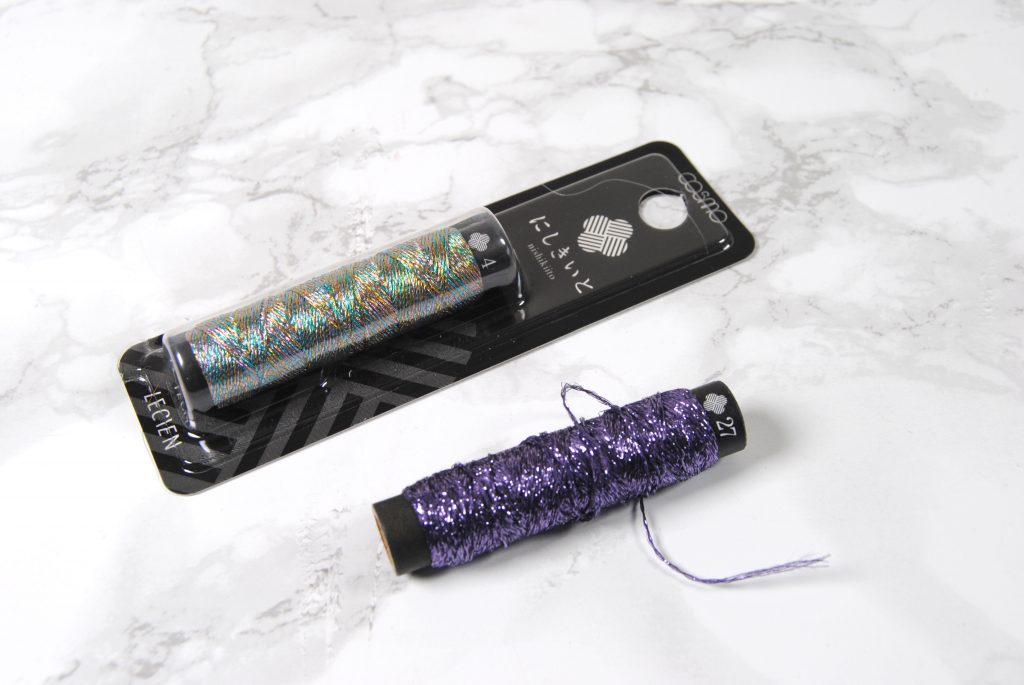
Lecien’s metallic threads are called Nishikiito and come in a blister pack normally. These are broken up into categories, but with actual names instead of just different number ranges.
- Nishiki – Subtle metallic colors used in traditional Japanese clothing.
- Kagami – The much brighter counterpart to Nishiki, with added shine/ glitter.
- Opali – A semi-transparent thread with more opalescent shimmer; formerly Shabon-Dama.
- Champagni – Pastel and gentle sparkles akin to champagne bubbles.
- Neoni – Bright, dramatic neon colors
You can find a full chart of their current metallic colors here. Some may be harder to find, though I notice most english speaking stores just lump them all into Nishikiito or ‘Cosmo Metallics’, if you’re having trouble finding them.
I also saw some mentions of a Lecien Sparkle line but couldn’t find anything about it on Lecien’s official English site. It may be a newer line at the time of writing this.
Cross Stitch with Lecien Threads
Okay, that’s a lot of information to start with. But the real question is, what’s it like to stitch with? Well I stitched up two small designs to try them out, so let’s go on that journey together.
I’ll be starting with 14 count white aida, as that’s something most of you will have worked on before. I specifically designed a pattern to include full stitches, back stitches, and french knots so we could fully get a feel for it.
Lecien Nishikiito
Let’s start with the Nishikiito Kagami 27. I will immediately note that it’s super soft compared to other metallics I’ve worked with. It just feels really nice to stitch with and isn’t course or gritty like others can be.
It’s a single braid, so you don’t have to separate strands with this. Though you could double it up if you feel the coverage isn’t good enough.
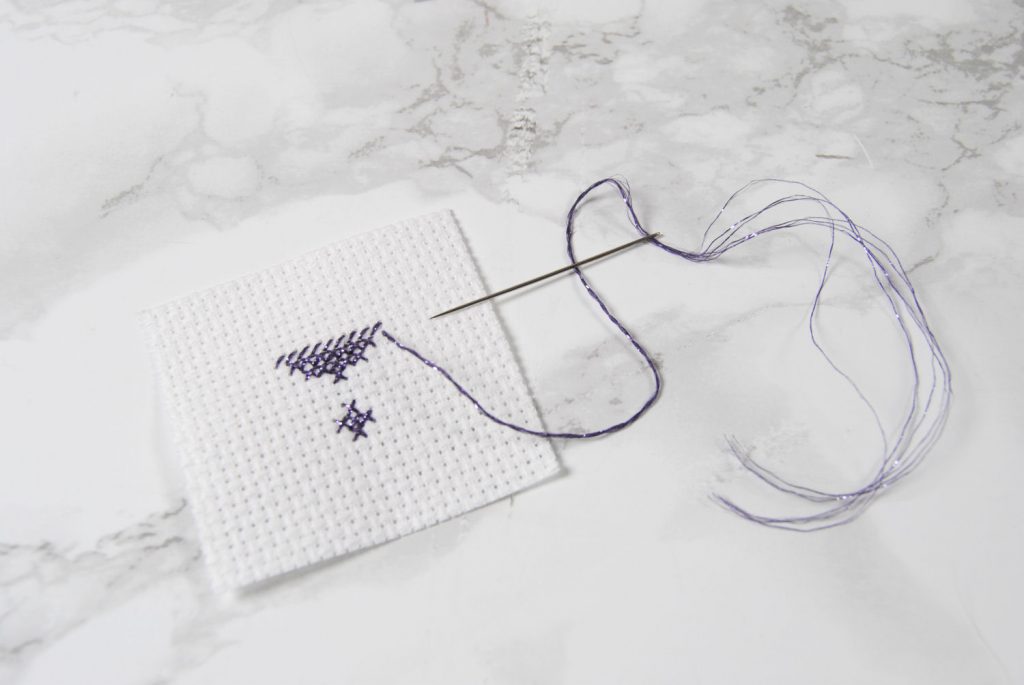
It didn’t take long for the ends of the thread to start to fray and split apart though. I was using just a forearm’s length to start with, too. I’d definitely recommend shorter strands with this brand.
That said, it didn’t pill or split in the middle, just at the ends. Which compared to say, DMC Light Effects is quite the feat.
Lecien Cosmo Seasons
I then worked with the Cosmo Seasons 8024. My design didn’t have very many stitches, so you don’t see all the variegation but it sure is subtle. This is a bit more visible in my Skyrim Constellations SAL, as that’s what I originally bought these for. This shows off the color variegation much better, I think.
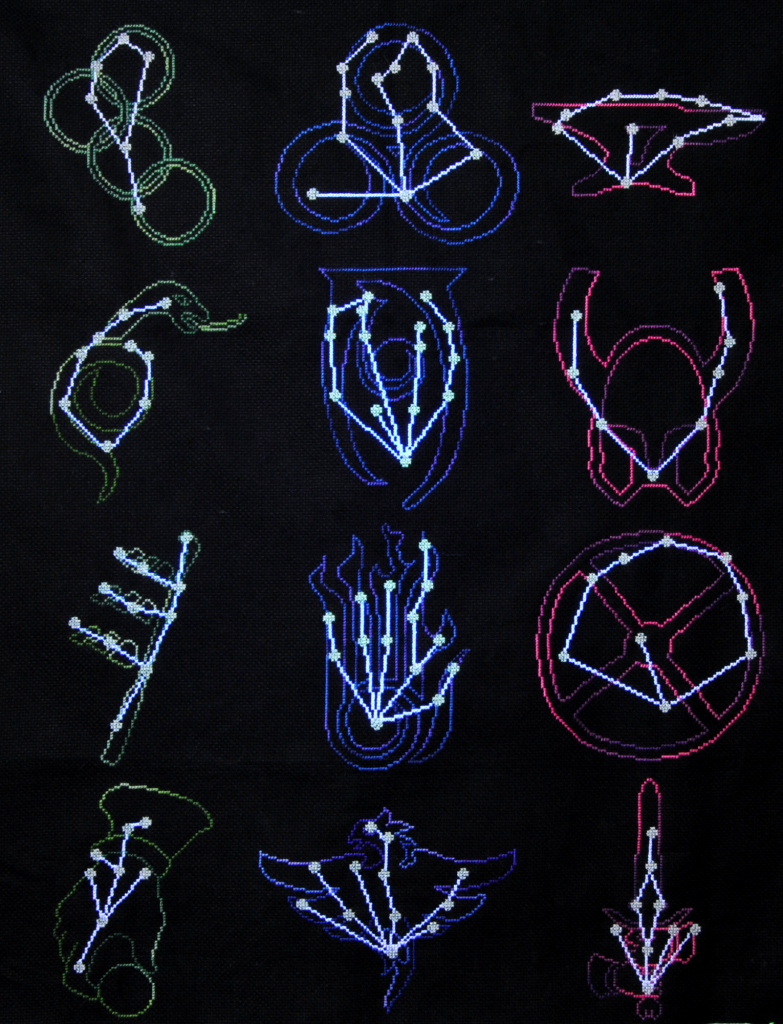
Cosmo Seasons are pretty standard cotton, and do feel softer than most over-dyed / variegated threads I’ve worked with. They also seem more vibrant than some of their counterparts. I mainly love their wide selection of colors though, making it very easy to substitute a variegated Cosmo Seasons into almost any project.
Next up I did the back stitch and french knots in Nishikiito Nishiki 04. The back stitch went on pretty cleanly. It did twist up a bit, so I had to use my needle as a laying tool as I pulled it through to keep it straight. But still quite basic.
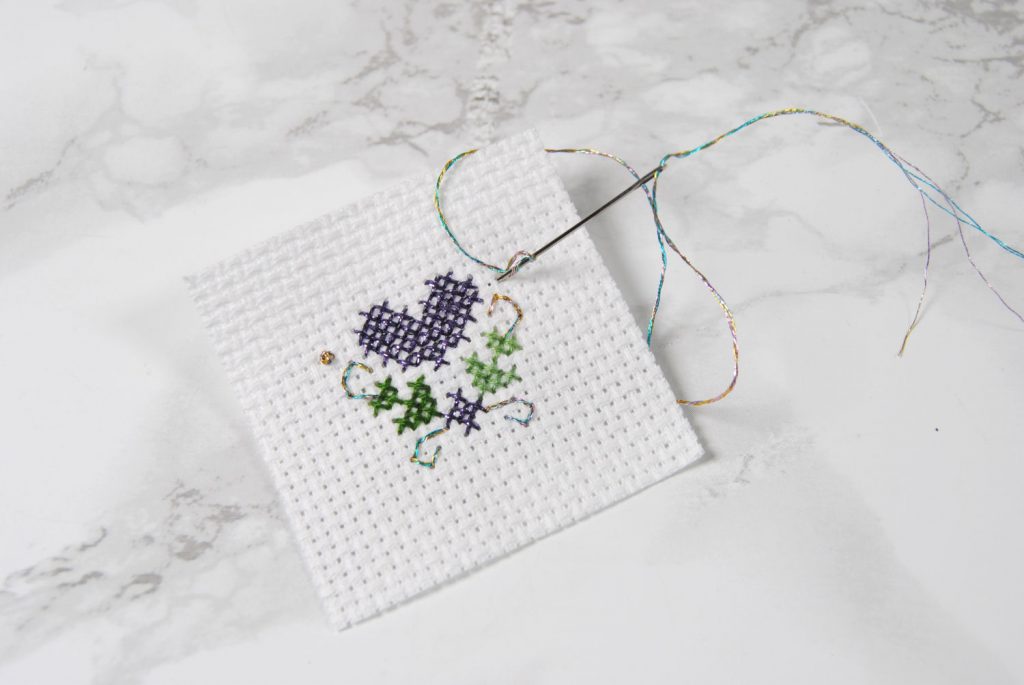
Now, if you’ve struggled with both metallics and french knots, you may think I’m crazy. Honestly, since the Nishikiito line is very soft compared to other metallic threads, it was actually quite easy to manipulate it into a french knot. It was rather surprising!
The ends still started to split up like I did on the Kagami, but I wasn’t stitching as much this time and used a shorter length so it wasn’t that bad. However, I imagine some thread conditioner or beeswax would help prevent that if you’re struggling with it.
Petit Point with Lecien Threads
To mix things up, I decided to also try a petite point design on 28 count antique white evenweave. If you don’t know what petite point is, I mention it briefly at the beginning of my flat ornament tutorial. For this piece, I did a little more complicated of a design so that it would turn out around the same size as the one on 14 count.
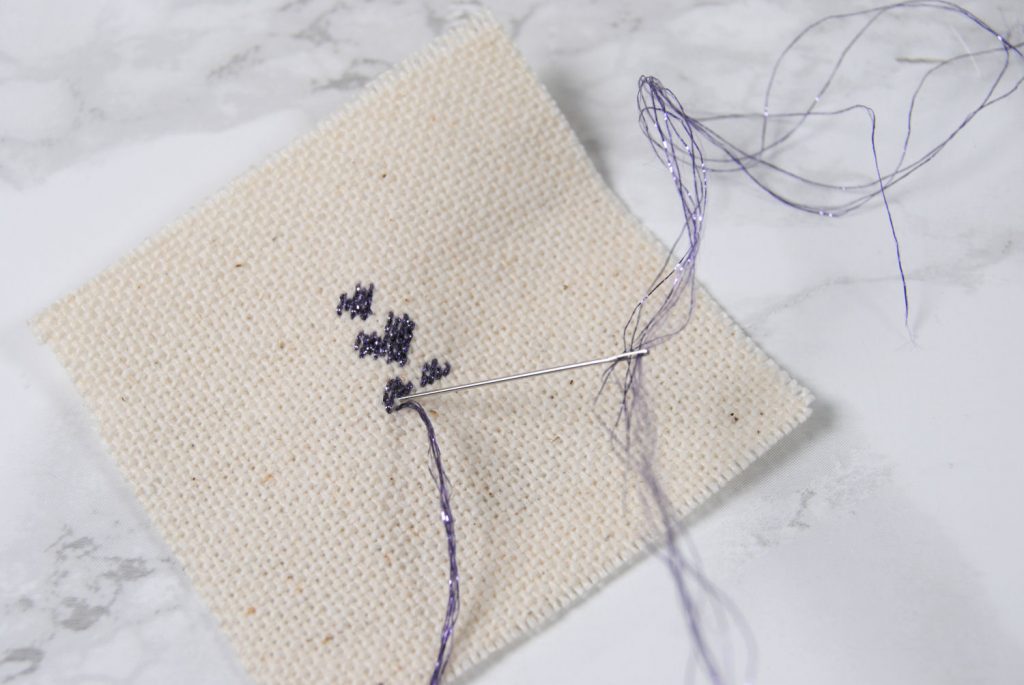
Once again, you see the thread start to fray quite a bit, nut overall not unmanageable. I had a bit more green to work with this time so you can see more of the subtle color changes throughout.
I struggled a bit more with the backstitch, but with enough patience it slid into place without too much issue.
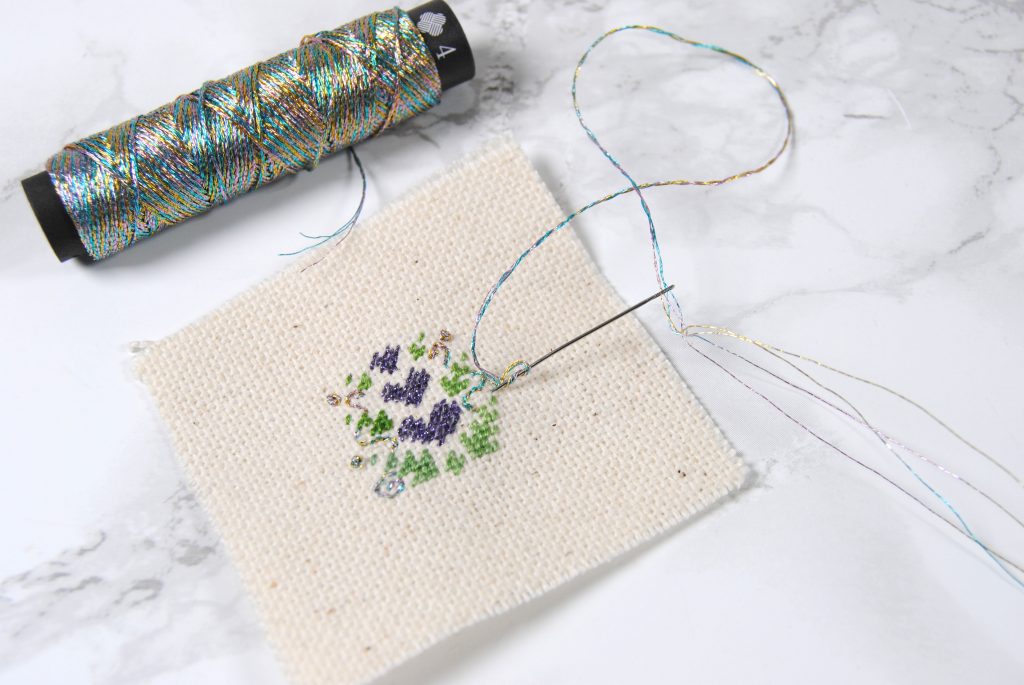
Lecien Cosmo & Nishikiito vs Other Brands
Ultimately, I really enjoyed working with the Lecien threads and will likely use them more. Especially their Cosmo Seasons line.
The threads I tried are all super soft and wonderful to touch and work with.
The metallics seem a bit more vibrant than DMC Light Effects, and overall easier to manage. The Nishikiito line seems to be about the same weight as Kreinik Very Fine #4 thread. So if you’re the type that usually goes for the #8, you may want to use two strands. It does fray more than Kreinik, though less than DMC Light Effects. Using shorter strands and investing in some beeswax may negate that, though.
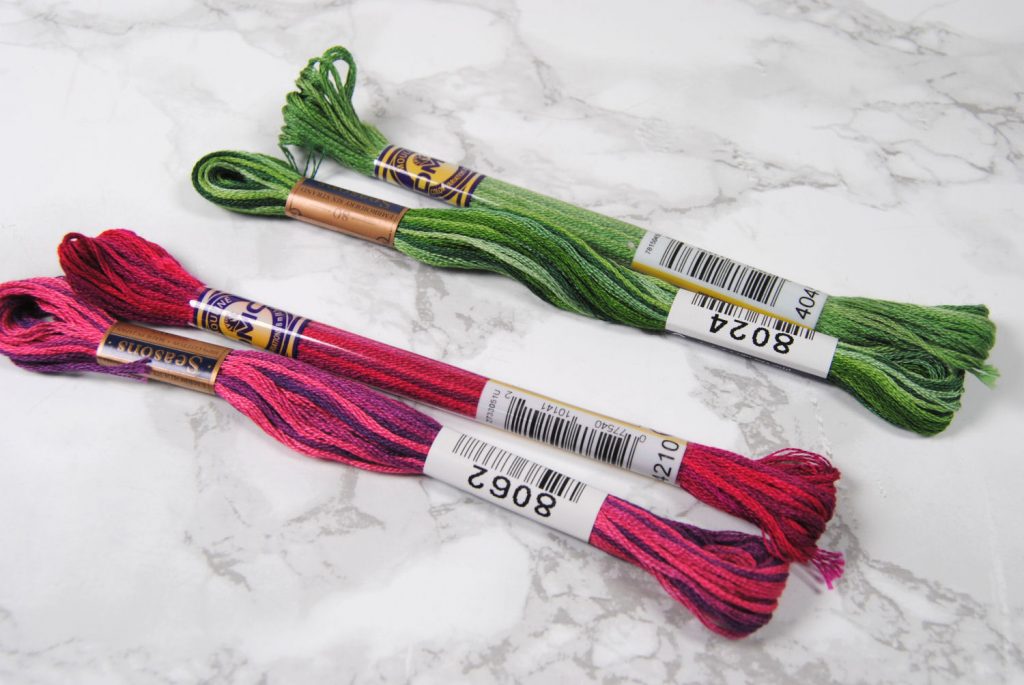
Above I’ve pictured two of the Cosmo Seasons with the closest DMC variegated threads I could find. As you can see, the cosmo is a bit brighter and has much starker color changes. There are plenty of colors available though, so take a look through their library and see what calls out to you.
The Finished Projects
If you’re curious what I ended up doing with these little designs, It urned them both into necklace pendants! It’s a fun way to finish up tiny designs and be able to wear your art.
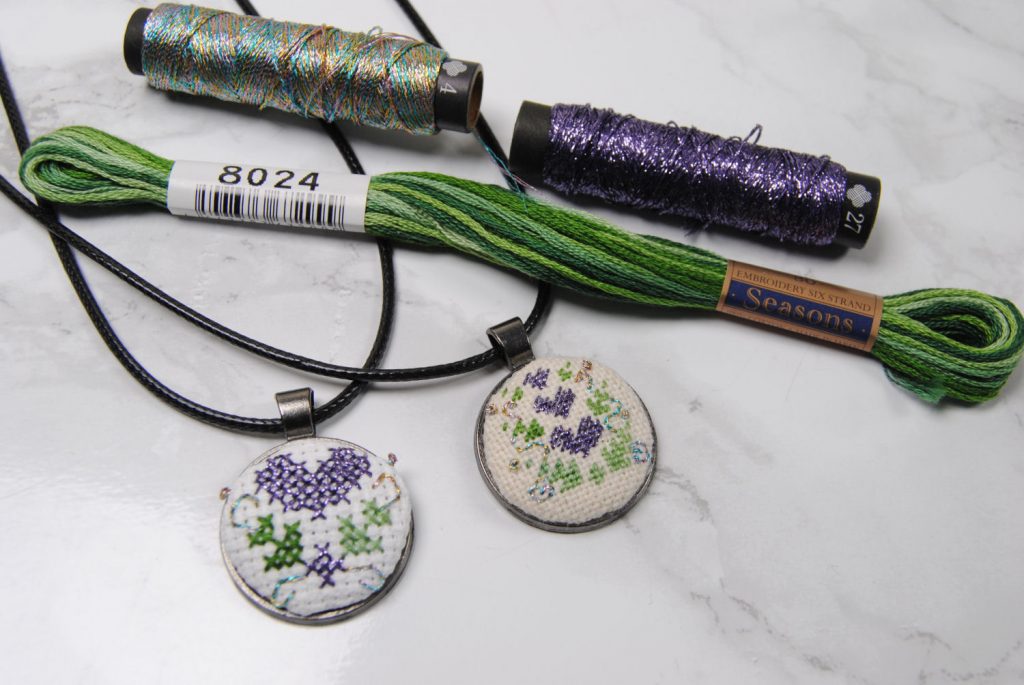
If you’d like to learn how to make your cross stitches into necklace pendants, I’ve put together a tutorial on how I make mine! Plus it includes the heart flower patterns shown in this review. Enjoy!

